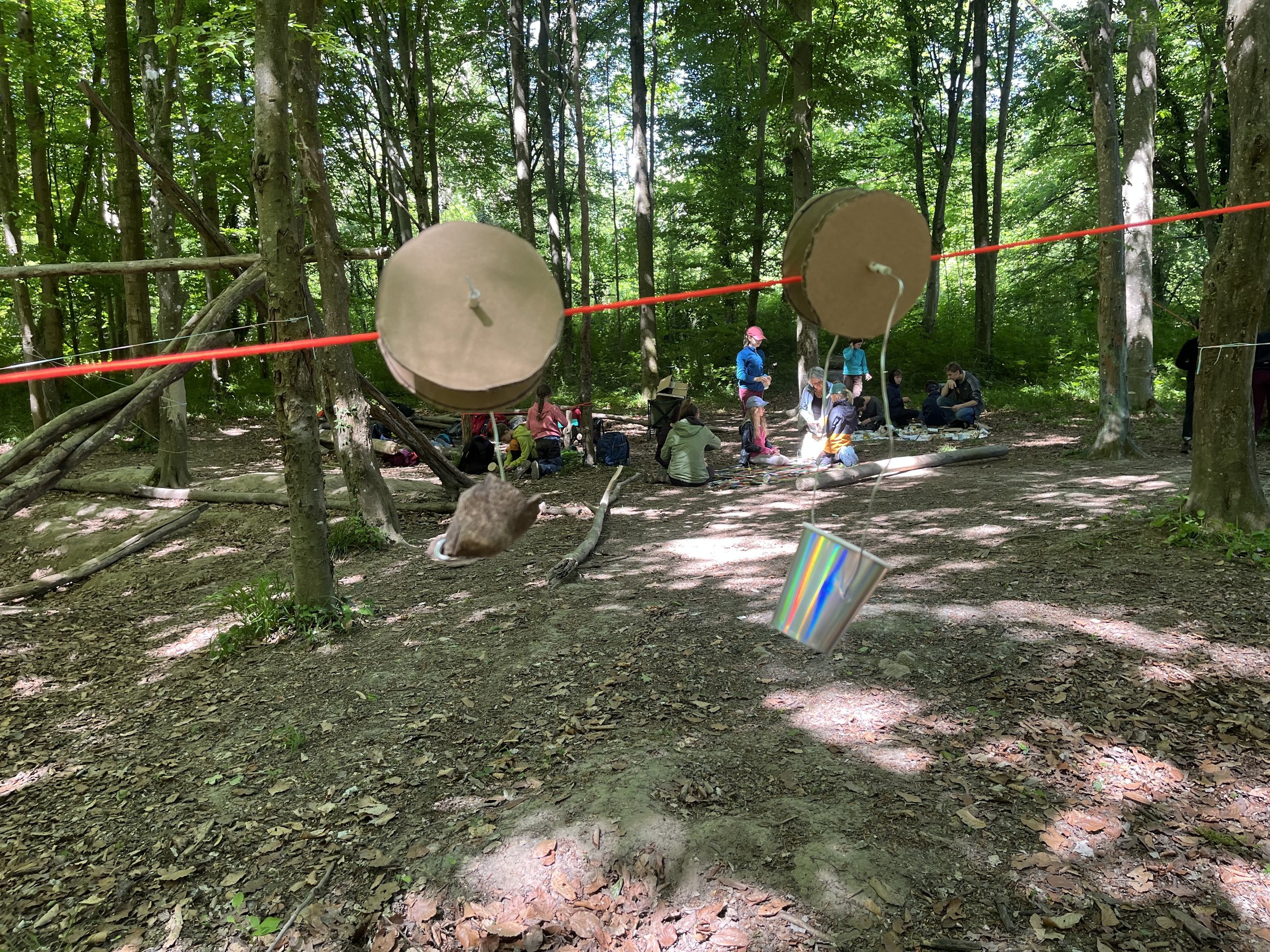Forest Tinkering with Sky Trams
This past weekend I collaborated with the Natur Werkstatt in Breisach am Rhein (a city on the border of Germany and France) for a tinkering workshop in the forest with a group of local kids. This group meets once a month and spends time outdoors exploring the natural area. I really enjoyed the challenge of facilitating the activity in the woods and seeing how the learners responded to the experimental prompt.
After a first site visit where we noted the different aspects of the environment, I thought that a version of the “sky trams” activity from my book would work well in the tree-filled clearing. I started making some prototypes in a local green area (and in my garden) to see how the parts worked.
And since the workshop would be about two and a half hours, I also thought to extend the project by adding motors to the designs. I got inspired by the crawlers developed by VoltPaperScissors and made a couple examples to show to the group to spark ideas.
One challenge from the preparations is that the wheels for the sky trams are pretty specific and are much harder to make without a hot glue gun. I thought that I could lower the threshold to entry while still allowing for participants to create their own unique designs by pre-building the wheels out of two pieces of cardboard attached to a straw wrapped with a little strip of corrugation for better grip on the line. One nice advantage to these wheels was that the straw axle could also be press fit onto the spinning shaft of the gear motor for a direct drive system.
On the day of the workshop I set up all of the materials and tools for the original sky tram designs on a big white sheet that we brought with us to the forest. I set up several lines of different types of string at different inclines so that the group could experiment. There was also extra string so that the learners could make their own designs. I set up the examples around the clearing so that they could organically discover them as they were coming to the morning circle.
It was so great to see how they jumped right in and started building and tinkering their own sky tram designs and testing them around the space. There were two main models with a single weight with a wire hanging mainly off one side of the body or a double weight with the wire straddling the middle of the wheel. As the group built their machines they investigated balance, weight and friction on the line.
There was a lot of iteration on the designs and testing at the various stations around the forest. We brought in a few extra elements like googly eyes and plastic animals so that the sky trams could turn into characters or woodland creature transports.
After about an hour of tinkering we introduced the motors and batteries along with the challenge to make a machine that crawled along a horizontal string. This proved to be a tricky challenge, but one that many of the participants dove into. One thing that I would like to tweak for the next time concerns the transition from zip line trams to motorized ones. This was the first time that I tried this experiment so I ended up leaving things a bit open about how to go from one version to the next. It wasn’t so easy to just add a motor to the existing designs so for the next time I try this project it would be better to either make a full break (putting the original sky trams aside and all working on something new) or finding a way to add in the motors to the previously built models).
The process of making the motorized sky trams really exemplified the idea of “hard fun” and although it was a challenge, that motivated many kids to stick with the process and come up with some great solutions. I was surprised and impressed with the way that the motorized sky trams moved across the strings.
All in all tinkering in the forest was an amazing experience. There’s something so nice about being out in nature and adding our handmade contraptions to the woodland environment. I’m hoping to do more workshops with Natur Werkstatt in Breisach and explore more ways of bringing playful explorations of art, science and technology outdoors in nature.









